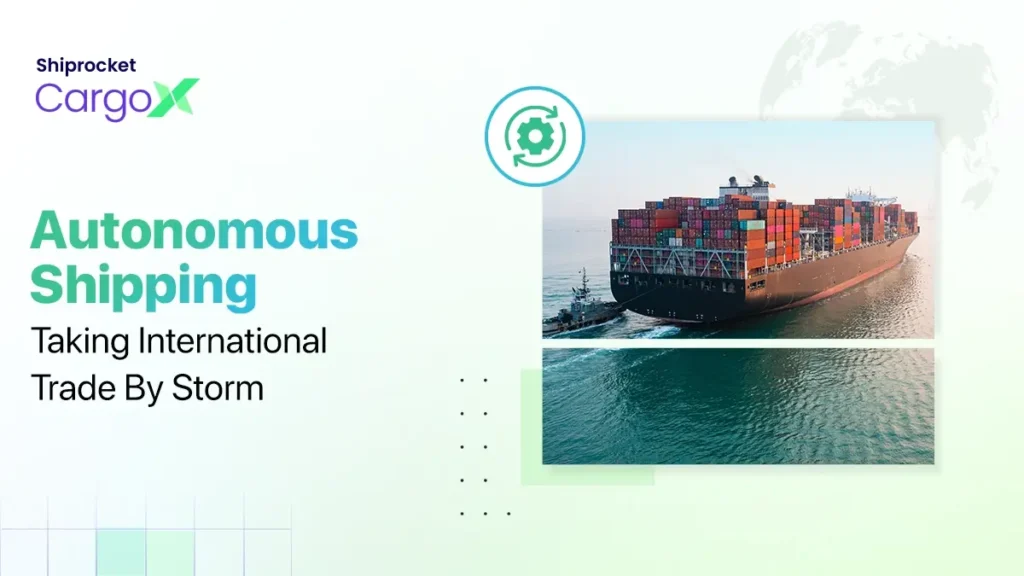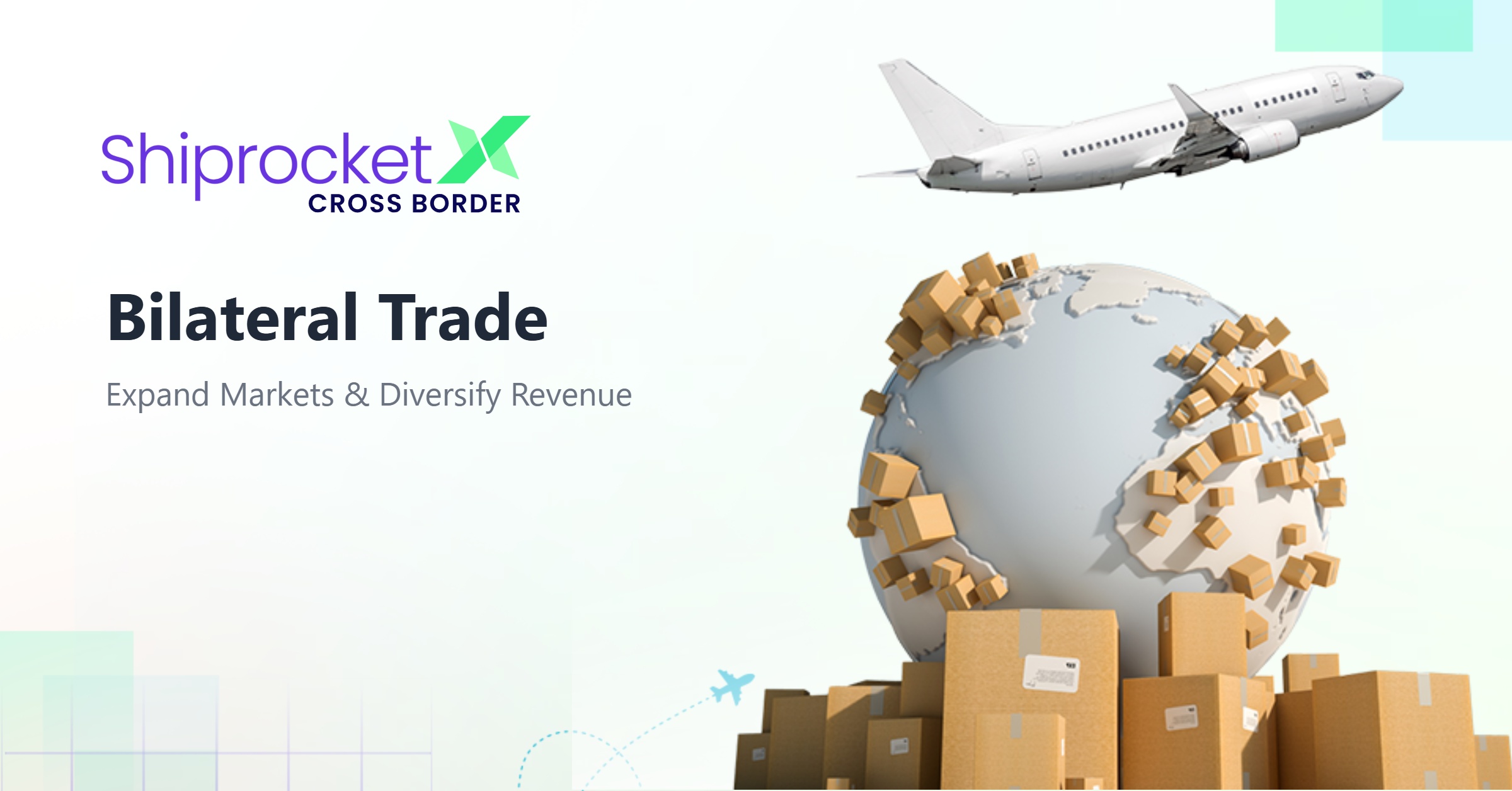Autonomous Shipping and Its Impact on Global Trade
In recent years, most international trade has relied on sea routes. A recent study by UNCTAD shows that over 80% of the volume of international trade in goods is carried by sea.
Nearly every seller shipping goods internationally encounters challenges, whether it’s high transportation costs or delivery delays. To address these issues, many are turning to more efficient solutions that offer better visibility and cost-effectiveness.
Autonomous shipping stands out as a promising alternative among the various options available. With advanced sensors and navigation systems, autonomous shipping provides round-the-clock monitoring of the status and location of your packages.
So, what is autonomous shipping and how can it be beneficial to you? Read on to know more about this shipping option that can help you streamline your operations and give you competitive advantage.

What is Autonomous Shipping?
Autonomous shipping is shipping your goods aboard a self-controlled cargo vessel that can transport goods across oceans without needing onboard crews. Instead of having crew members on board, these ships use advanced technologies like artificial intelligence (AI), robotics, smart sensors, and monitoring systems.
These ships might have one or more self-operating features. Some can be controlled from a central dashboard on shore, while others operate completely independently.
Autonomous vessels control themselves and make key decisions, like steering, changing speed, and avoiding crashes with other ships or obstacles.
These self-controlled vessels have some key elements. They include an automatic identification system to identify surrounding vessel traffic for navigation purposes, advanced radar and cameras for scanning the environment, automated navigation protocols for course correction, and constant system monitoring through communication satellites.
Autonomous shipping reduces human error, making the transportation of your goods by sea safer, more sustainable, and cost-effective.
Advantages of Autonomous Shipping for Sellers
Here are some of the benefits of autonomous shipping:
- Saves cost
By opting for autonomous shipping, you can reduce the cost of transporting your goods by removing the need for onboard crews. To run a cargo vessel, you would usually need to hire crew, and there must be provision for food, medical facilities, and other expenses. Depending on the number of crew members, providing these facilities can account for a large percentage of the overhead costs.
With autonomous shipping, you can avoid all these costs, potentially reducing the trip rates per container.
- Safety
Autonomous ships can eliminate human errors that could cause accidents in transit. These vessels also have advanced sensors that can detect hazards sooner. This makes this shipping option safer than other traditional modes.
- Inventory tracking and monitoring
One problem you may face is not having the necessary information and visibility when shipping goods overseas. However, autonomous ships use advanced sensors and satellite connections, allowing the shore control room to monitor all ship functions and cargo conditions in real-time.
With these, you can get timely updates on temperature levels, your goods’ locations, and estimated delivery time. This helps you address issues affecting your inventory management.
- Efficient use of space
In autonomous shipping, cargo space is efficiently used with careful loading and stowage planning. The entire hold and deck are used for freight, as no crew is needed.
As a result, you can optimize each shipment by loading more inventory within the same vessel dimensions. By packing more items into each shipment, you can save on shipping costs per product and meet more demand.
Autonomous shipping can greatly improve efficiency, make transportation smoother, and completely change how global trade works, giving you significant benefits.
Challenges and Risks in Autonomous Shipping
Though the advantages of autonomous shipping are vast, there are still some challenges and risks associated with this shipping option. These include:
- Cyber security risk
In the operation of autonomous shipping, ships connect to the Internet, which makes them prone to hacking. Hackers may try to access this system, steal cargo information, or even take full control of the ship. Any security issue could cause delay or loss of ship control.
- Technology risks
To operate without people, autonomous ships need very advanced technology, such as cameras, radar, and satellite communication. These systems might break down or have software problems.
Fixing issues in the middle of the ocean would be difficult. The technology must also function well in all types of weather, like big waves and storms. Quick changes in the weather might confuse these ships.
- Human error
Although humans’ absence from ships can reduce some risks, control rooms with monitors and computers still depend on humans. Tired staff could make mistakes while managing these ships, and managing too many ships at once could be too tedious for people on shift.
- Unexpected events and occurrences
No matter how well-tested these ships are, unexpected events can happen that trained crews might handle well, but autonomous ships might not be able to solve these issues. This could involve medical emergencies on other boats, small collisions, or fuel spills that need quick action.
Autonomous shipping has its advantages, but many challenges and risks remain around technology, security, and human factors that need careful research and solutions.
The Impact of Autonomous Shipping on Global Trade
Autonomous shipping could impact how goods are moved across nations. If shipping costs become cheaper, you, as a seller, might choose to ship your product to long distances instead of using planes. This could make ports busier, increasing work at the port for loading and unloading containers.
As autonomous shipping grows, the global trade network might change significantly. Supply chains may expand and include new trading partners, making it easier for smaller countries to join the global market. But existing ports and transport companies may suffer if customers switch to cheaper, autonomous shipping options.
Preparing for the Future: What Sellers Should Do Now
Autonomous shipping is set to change the future of goods transportation. As a seller, you must be prepared for this revolutionising shipping option to keep up with the evolving marketplace.
The following steps will help you prepare for this expected change in freight shipping:
- Monitor development closely.
You should learn about the shortcomings of autonomous shipping and take appropriate measures to avoid losses.
- Review demand in the supply chain.
Research on how autonomous shipping can help you streamline your logistics network. Also, consider expanding direct shipping routes instead of using ports as hubs.
- Carefully investigate shipping options.
You can compare different shipping options. Will it favour you more if you own an autonomous ship or book a space on a cargo ship? Make sure to investigate all options carefully and make the right decision based on your budget and freight quantity.
- Work with regulators ahead of time.
You can consider building relationships with policymakers regarding autonomous shipping rules. To speed up approval, you can share data about your goods’ economic and environmental effects with the regulators.
- Be ready for any changes.
It eliminates the need for onboard crews, but roles like monitoring the ship’s movement and performance, routing ships, and managing terminals will likely become more important. You can hire existing workers to help you manage this fleet seamlessly.
As autonomous shipping will transform shipping processes in the future, you can gain a competitive advantage and strengthen your ability to handle inevitable changes in the shipping industry.
Conclusion
Autonomous shipping is an effective option that transforms global trade, increases shipping efficiency, and reduces costs. Embracing this technology can lead to new opportunities. However, to access the benefits of autonomous shipping, you must stay informed. Though there are some challenges and risks associated with this shipping option, by observing critical information, you can fully enjoy its advantages.






